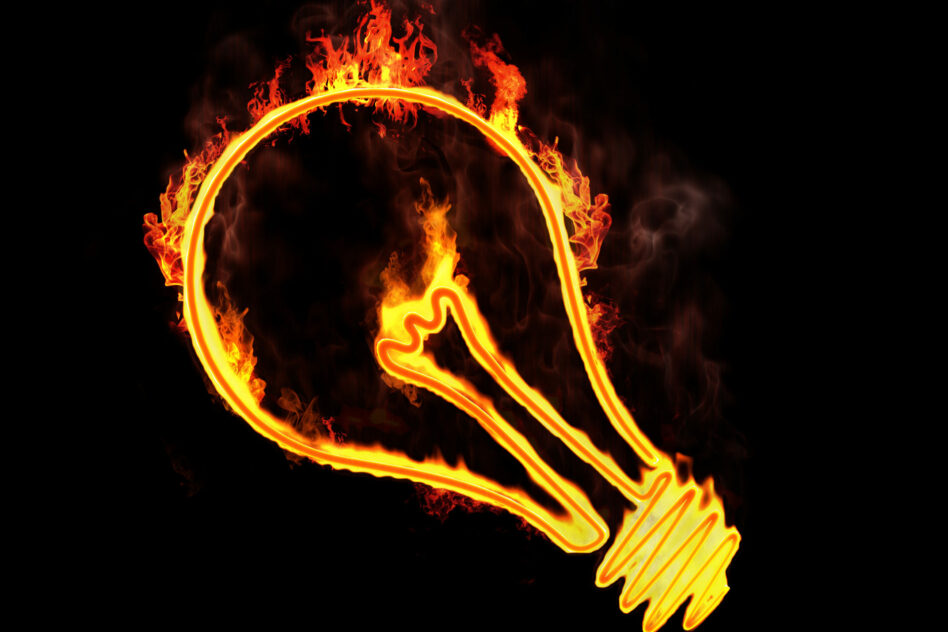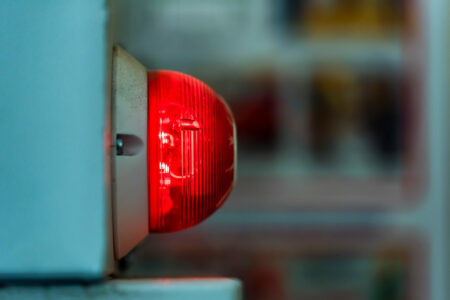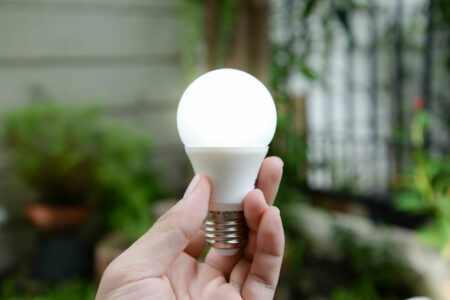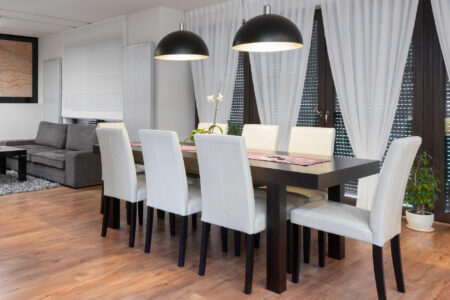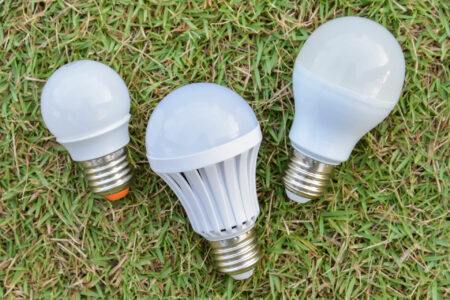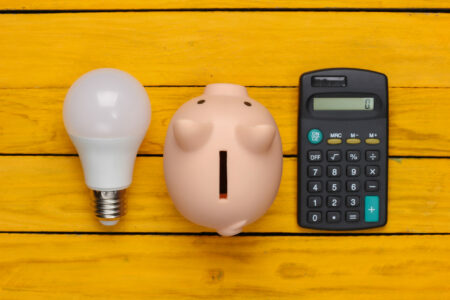LED lights can catch fire, but the likelihood is extremely low. However, LED lights can still be a fire hazard if you don’t use or install them properly. Keep reading to understand this can happen and how you prevent LED lights from catching fire.
4 Improper Uses of Led Lights That May Cause Fire
These are the common reasons why LED lights may catch fire:
Overloading the Circuit
If you connect too many LED lights to one circuit, you’re using more electricity than the system can handle. Overloading the electrical circuit is a common cause of fire. So how do you avoid overloading?
- Know the maximum current rating of the circuit
- Limit the number of devices connected
- Avoid connecting multiple power strips or extension cords to create more outlets
- Distribute the electrical load evenly across different circuits
- Upgrade the wiring
- Consult a licensed electrician
Using Non-Certified Products
Using cheaply made or non-certified LED lights may increase the risk of fire. These products may be missing necessary safety features such as overheating protection.
This means that if you leave the product on for too long or you don’t cool it off properly, it could overheat and catch fire.

Poor Installation
Incorrect installation of LED lights can cause the wiring to become loose or exposed, which can create a fire hazard. Defective installation and faulty wiring are the most common causes of electrical fires.
Overheating
While LED lights produce less heat, they can still overheat if you don’t install them in a well-ventilated area. The same applies if you cover them with a material that prevents heat from dissipating.
Is It OK to Leave LED Lights On?
Yes. It’s generally safe to leave your LED lights on for an extended period. Leaving them on is efficient and won’t significantly affect the lifespan of the bulbs. Some LED lights even come with timers, so you can set them to turn off after a certain amount of time.
How Long Can LED Lights Stay On?
Generally, LED lights are designed to be long-lasting. They can stay on for thousands of hours without any issues, making them an excellent choice for leaving on for extended periods.
But the length of time that LED lights can stay on depends on these factors:
Quality
The quality of LED lights can affect their lifespan and how long they can stay on. Higher-quality LED lights last longer and stay on for longer periods.
Ambient Temperature
High temperatures can reduce the lifespan of LED lights and make them less efficient. Therefore, it’s essential to keep LED lights in an area with a moderate temperature and good ventilation to prevent them from overheating.
Manufacturer’s Instructions
Some LED lights are designed to be left on for extended periods, while others may have recommended usage times to ensure their longevity. The manufacturer’s instructions can vary depending on the type of light and its intended use-case.
Are LED Lights Safer Than Incandescent Lights?
Yes. LED lights are generally considered safer than incandescent lights for several reasons:
Lower Heat Emission and Fire Risk
LED lights are less likely to start a fire than incandescent lights. Incandescent lights can become extremely hot.
If you leave them on for too long or you place them too close to flammable materials, they can ignite a fire. While LED lights emit much less heat, reducing the fire risk, making them safer.
No UV Radiation
Incandescent bulbs emit UV radiation, which can be harmful to your skin and eyes if you’re exposed to it for long periods. LED lights, on the other hand, emit little to no radiation, making them safer to use.
Durability
LED lights are more durable than incandescent bulbs, making them less likely to break or shatter. Incandescent bulbs shatter if you drop or bump them, exposing the filaments inside and creating a risk of injury. LED lights, however, are made with solid-state technology, making them more durable.
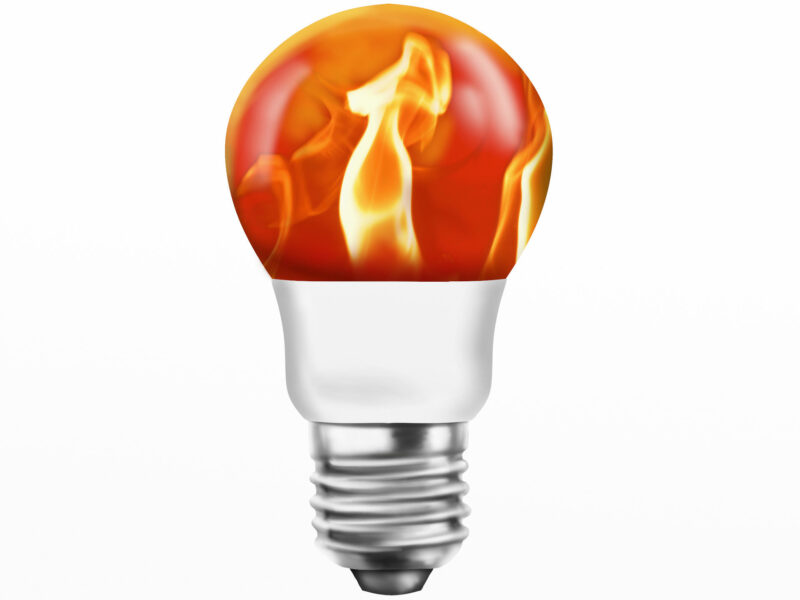
Are LED Strip Lights Safer Than LED Light Bulbs?
Both LED lights and LED strip lights are safe when you use them properly. Choose the appropriate lighting solution for the intended use, and take steps to ensure that they don’t pose a risk of fire, electrical shock, eye strain, or tripping hazards.
Can a Flickering LED Light Cause a Fire?
It’s highly unlikely for a flickering LED light to cause a fire. They typically flicker when there’s a problem with the power supply or the bulb itself. The flickering is caused by an intermittent connection that causes the current to fluctuate, leading to a visible flicker in the light.
It’s still best to address any flickering in LED lights promptly to ensure that they’re working correctly. If you notice that your LED light is flickering, try to replace the bulb to see if that solves the problem.
If the issue persists, it may be a problem with the power supply or the wiring. You should seek the assistance of a qualified electrician to address the issue.
Can Outdoor LED Lights Cause a Fire?
Outdoor LED lights are weather-resistant and safe for outdoor use. However, it’s still important to use outdoor LED lights that have been certified by a recognized safety organization.
It’s essential to follow the manufacturer’s instructions for use. Additionally, ensure that you don’t install outdoor LED lights near flammable materials or other potential fire hazards.
What Causes LED Lights to Overheat?
Here are some factors that can cause LED lights to overheat:
Poor Quality of LED Light
Poor-quality LED lights may not be designed to handle the amount of heat generated and may overheat as a result. Low-quality materials can make the bulbs less efficient at producing light and more susceptible to overheating.
Blocked Ventilation
LED lights generate heat and need proper ventilation to keep them cool. If the ventilation is blocked or insufficient, the heat will build up, causing the LED light to overheat.
Overdriving
If you overdrive a LED light, you’re supplying it with more voltage than it can handle which can cause it to overheat. Overdriving happens when using a higher voltage power supply than recommended or connecting too many LEDs in a series.
Environmental Temperature
Temperature can also affect the performance of LED lights. If it‘s too high, it can cause the LED light to overheat.
What To Do if LED Lights are Overheating?
If you notice that your LED lights are overheating, here are some steps you can take to prevent damage or potential safety hazards:
- Turn off the LED lights
- Improve ventilation
- Check the power supply
- Replace poor-quality LED lights
- Monitor temperature
- Contact the manufacturer or an electrician
Safety Precautions When Using LED Lights
While LED lights offer many benefits over traditional lighting, it’s important to follow some general safety precautions to prevent accidents.
Here are some LED lights safety cautions:
Read the Instructions Carefully
Before using LED lights, carefully read and follow the manufacturer’s instructions, including warnings and cautions. This guide will contain the information you’ll need to ensure safety in using your LED lights.
Don’t Overload Electrical Outlets
Avoid overloading electrical outlets with too many LED lights. Ensure you distribute the load evenly across different outlets, and don’t use multiple extension cords.
Use the Right Type of LED Lights
Make sure you use the right LED lights for the intended purpose. Some LED lights are designed for indoor use only, while others are suitable for outdoor use.
Don’t Use Damaged Lights
Avoid using damaged LED lights, including those with cracked bulbs, frayed wires, or damaged sockets. Additionally, always check the LED light bulb upon purchase to ensure it’s not damaged.
Keep Them Away from Water
Don’t use LED lights in wet environments. Keep them away from water, including rain, snow, or water sources.
Keep them Away from Flammable Materials
Avoid placing LED lights near flammable materials, such as curtains, paper, or other combustible materials.
Install them Properly
Ensure that you install LED lights properly and securely, especially when using them outdoors. Use appropriate mounting hardware. This can help ensure they’re not at risk of falling or being damaged by wind or other weather conditions.
Avoid DIY Repairs
Attempting to repair poorly installed or damaged LED lights yourself is dangerous. It may even result in further damage or safety hazards. Always rely on the expertise of a licensed electrician to make any necessary repairs.
4 Tips for Maintaining LED Lights
Maintaining LED lights is relatively simple. Follow these tips to help prevent potential safety hazards:
Keep Them Clean
Dirt and dust can accumulate on the surface of LED lights, reducing their brightness and efficiency over time. Regularly cleaning the surface of LED lights with a soft, dry cloth can help maintain their performance.
Check for Damage
Inspect the LED lights for any signs of damage, such as cracks or dents, which can affect their performance and lifespan. If you notice any damage, address it as soon as possible to prevent further issues.
Check the Wiring and Connections
Loose wiring or faulty connections can cause LED lights to flicker or malfunction. Regularly inspecting the wiring and connections can help prevent these issues and ensure that the lights are working properly.
If you notice something is wrong with your wiring, don’t use this light until a licensed electrician has fixed the issue.
Replace the Faulty Parts
If any parts of the LED lights, such as the bulbs or drivers, are faulty or not working properly, call an electrician to replace them. This can help ensure that the lights are working at their optimal level and prevent potential safety hazards.
